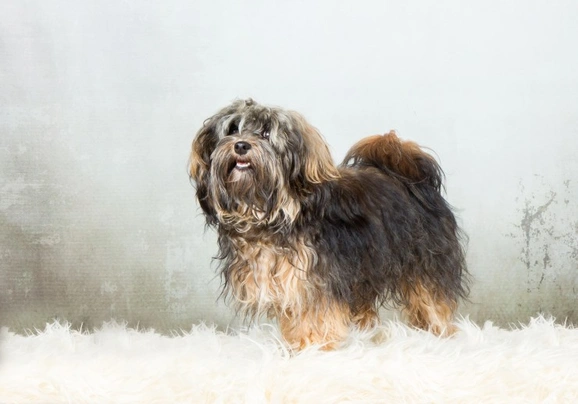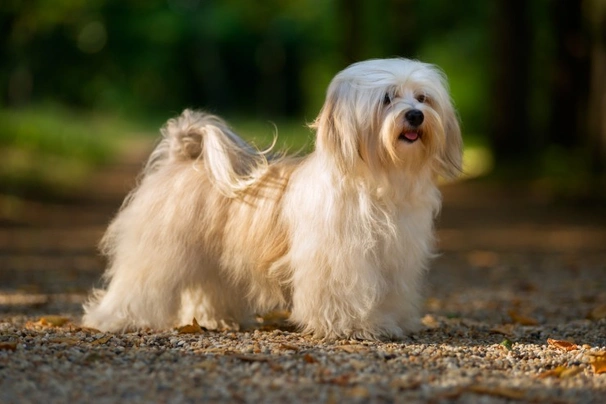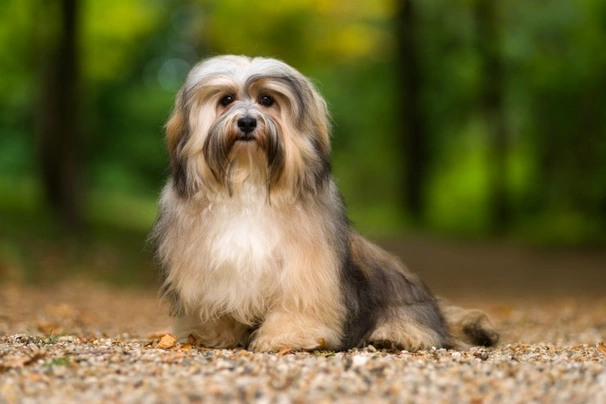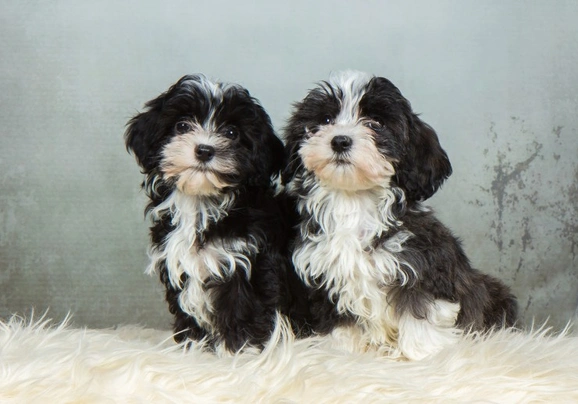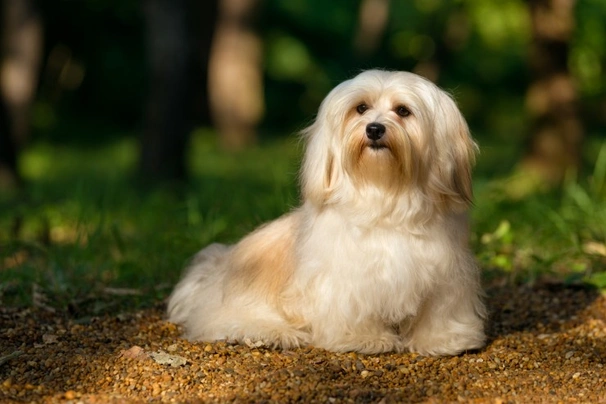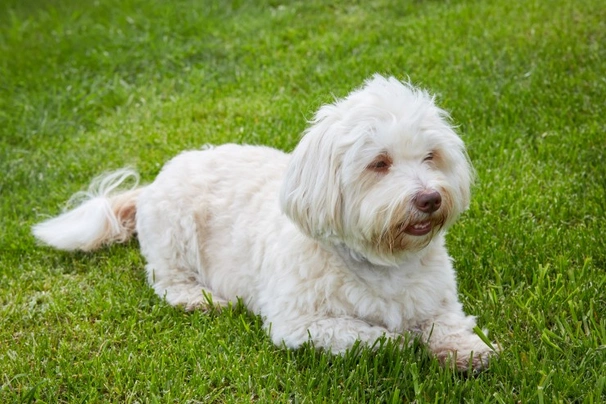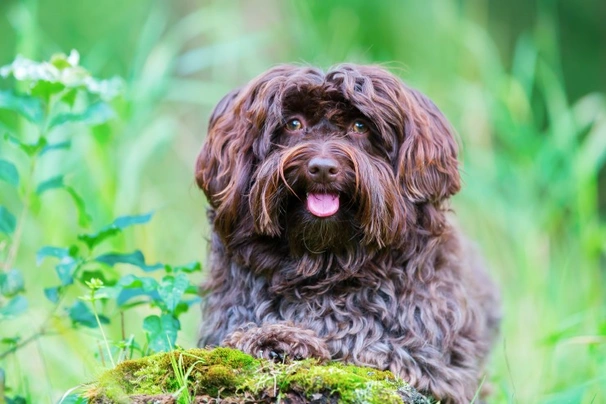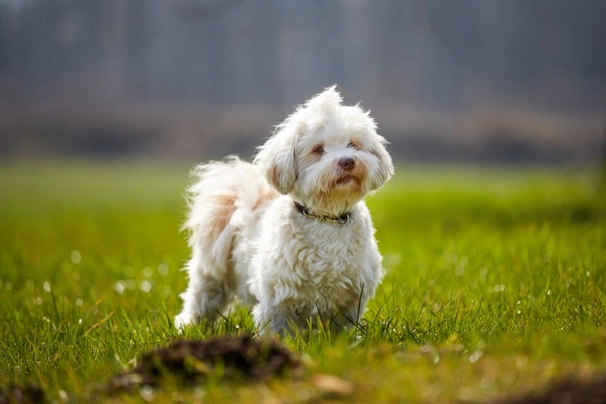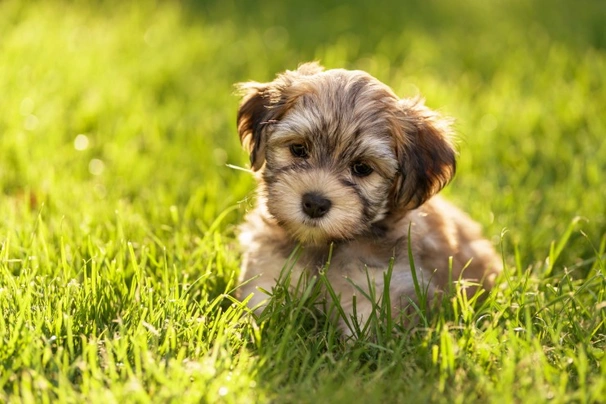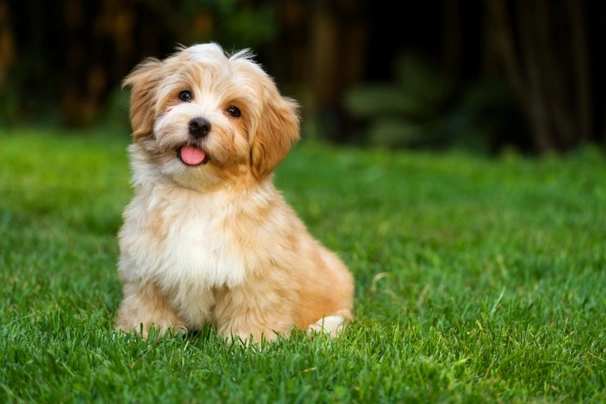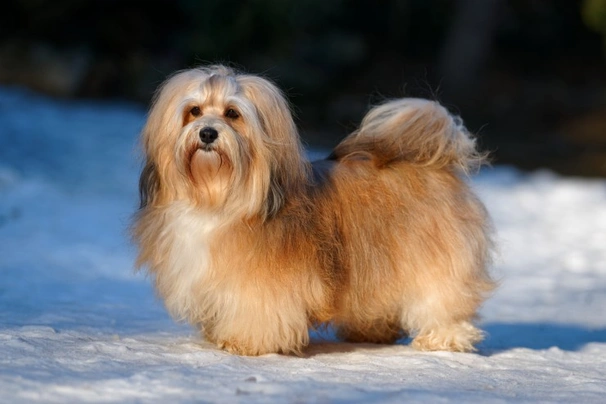Havanese
Pros
Cons
Introduction of the Havanese
The Havanese, renowned for its enchanting appearance and devoted temperament, is one of the most beloved small companion breeds worldwide. Originally developed as a charming companion dog, today they continue to win hearts with their intelligence, affectionate nature, and the uniquely strong bond they form with their families. Their compact, sturdy build paired with a silky, lavish coat and lively personality makes them a standout choice for those seeking a spirited yet gentle family pet.
Primarily bred to be loving lap dogs, Havanese thrive in homes where companionship is constant, as they can suffer from separation anxiety if left alone for long stretches. Their temperament is lively and playful, yet they also adapt well to various living situations, from apartments to houses with gardens, provided they receive regular exercise and mental stimulation. Their friendly disposition means they generally get along well with children, particularly older kids, and other pets.
Ideal for first-time owners and families alike, the Havanese's moderate exercise needs and trainable nature make them a manageable breed for diverse lifestyles. However, their grooming requirements are considerable; their long, silky coat requires daily care to prevent matting and maintain the breed’s signature luxurious texture. Prospective owners should be prepared for this commitment to keep their Havanese looking and feeling its best.
Perfect For
The Havanese is perfect for individuals or families seeking a small, affectionate companion with a lively temperament. They suit people who spend ample time at home or can provide company, as the breed thrives on interaction. Their manageable exercise needs fit well with those leading less active lifestyles yet desiring an engaging pet. Apartment dwellers will find the Havanese a suitable choice, given its adaptable personality and size.
Key Considerations
Potential owners must consider the breed's need for daily grooming to maintain coat health and their strong attachment to human company, which can lead to separation anxiety if left alone too often. Training requires consistency and patience, especially to manage their tendency towards wilfulness and occasional barking. Families with very young children may find the energetic playstyle challenging, so supervision is necessary to foster safe interactions.
History of the Havanese
The Havanese breed originates from Cuba, where it was developed as a cherished companion for the wealthy and aristocratic during the 16th and 17th centuries. Descended from Mediterranean Bichon-type dogs introduced to Cuba alongside European settlers, the breed’s ancestry likely incorporates influences from the Bichon Frise, Maltese, Coton de Tulear, Lowchen, and Bolognese. The introduction of Poodle-type dogs and water breeds like the Portuguese Water Dog further shaped the Havanese’s development.
Early Development
Originally known as the Havanese Silk Dog, the breed was prized in Cuban society as a companion dog, with a unique coat adapted for heat insulation. Political and social upheavals, including the Cuban Revolution in 1959, drastically reduced the breed’s numbers as many citizens emigrated, taking their dogs abroad. However, some dogs remained among lower classes in Cuba, which ensured the breed's survival. The eleven foundation dogs exported from Cuba to America in the 1970s became the basis for the modern breed, preserved through disciplined breeding programs.
Modern Recognition
The Havanese is recognised by The Kennel Club and enjoys a growing fan base in the UK and worldwide. The Cuban Havanese Club was formally founded in 1991, revitalising the breed’s presence in its homeland. Prominent breeders like Barbara Benersen in the UK helped solidify the breed’s status there by importing dogs and establishing breeding programs in Europe. Today, the Havanese is Cuba’s national dog and enjoys a strong, steady increase in popularity, ranking consistently among the top 100 dog breeds on Pets4Homes in the UK.
Appearance of the Havanese
Size and Build
The Havanese stands between 23 to 28 cm tall at the withers, with males and females sharing very similar measurements. Weighing between 4.5 and 7 kg, they are small yet solidly built, boasting a sturdy frame with well-balanced proportions. The breed presents a slightly longer-than-tall body shape, with strong hindquarters and well-laid shoulders supporting straight legs of moderate bone density. Their feet resemble those of a hare, compact and well-arched.
Coat and Colours
One of the breed’s hallmark features is its profuse double coat, silky to the touch and resembling raw silk. The coat texture can range from slightly wavy to softly curled, providing excellent insulation against heat despite its apparent delicacy. Recognised coat colours by The Kennel Club cover a wide spectrum including solid colours and combinations such as black, brown, cream, gold, red, sable, and white, alongside particoloured and tricoloured variants. Notably, white-coated Havanese should be tested for congenital deafness using BAER testing.
Distinctive Features
The Havanese has a slightly rounded head with a moderate stop and a short muzzle. Their noses and lips are predominantly black, with brown dogs occasionally showing brown pigmentation. Large almond-shaped eyes rimmed in black lend a gentle, expressive look, while light-colored eyes and brown rims occur in brown-coated dogs. Their ears are set fairly high, dropping just above the eyes, held slightly raised during alertness. The tail is a signature feature, heavily feathered and carried over the back in a plume, contributing to the breed’s distinctive silhouette. When moving, they exhibit a lively, springy gait with legs traveling in parallel, emphasizing their agility and elegance.
Gender Differences
While males and females share most physical traits closely, males tend to be marginally larger and heavier. Temperamentally, males may display a slightly more confident aura, whereas females typically show a gentle yet equally lively disposition. Both require the same level of grooming and exercise to maintain health and appearance.
Temperament of the Havanese
Core Personality Traits
The Havanese is renowned for being affectionate, lively, and highly intelligent. Their eagerness to please and strong desire to engage with their families make them relatively easy to train. They display a charming mischievous streak complemented by a show-off nature, thriving on attention and interaction. However, this intelligence also means they rapidly pick up both good behaviours and any unwanted habits if training is inconsistent.
Social Behaviour
These dogs are notably social and bond deeply with their owners, craving companionship and interaction. While generally friendly with strangers, their natural tendency to bark serves primarily as an alert rather than aggression. They coexist well with other dogs and pets, especially when socialised properly from a young age. Their high prey drive means smaller animals should be supervised, especially at introductions.
Working Instincts
Originally used for herding poultry in Cuba, the Havanese retains a subtle herding instinct, which can appear in behaviours such as circling or nipping at heels during play or activity. They enjoy water and can be excellent swimmers but precautions nearby water are recommended due to their small stature. Their watchdog skills are typically alert and vocal without aggressive tendencies.
Common Behavioural Challenges
Separation anxiety is a significant concern for the breed due to their strong bonds with their families. Without sufficient companionship, they may develop destructive behaviours as a means of coping. Excessive barking can also become an issue if left unaddressed, potentially causing neighbour complaints. Training to curb these behaviours must be consistent and gentle, focusing on mental stimulation and socialisation.
Intelligence / Trainability of the Havanese
The Havanese is quick to learn and responsive to training, making them one of the more manageable small breeds for owners new to dog training. A firm but gentle approach that establishes consistent rules from puppyhood is essential to avoid 'small dog syndrome'—where the dog becomes stubborn or difficult due to overindulgence.
Puppy Training Priorities
Early training should focus on basic commands such as 22;come22;, 22;sit22;, 22;stay22;, 22;quiet22;, 22;leave it22;, 22;down22;, and 22;bed22;. These lay a foundation for good behaviour and household harmony. Consistent socialisation in the early weeks is vital to foster confidence and reduce fearful behaviours.
Training Methods That Work
Positive reinforcement is key, using treats, praise, and interactive play. Training sessions should be short and engaging, particularly for puppies. Avoid harsh corrections as the breed responds better to kindness and patience. Mental stimulation through interactive games and brain teasers helps prevent boredom and associated bad habits.
Advanced Training Potential
Havanese excel in obedience and various canine sports like agility, making them suitable for advanced training and competition. Their intelligence supports learning complex commands and tricks which also help deepen the owner-dog bond.
Common Training Mistakes
Owners should avoid spoiling their Havanese puppy too much, as this can lead to wilfulness and the development of bad habits. Inconsistent commands among family members can confuse the dog, as can neglecting mental stimulation needs.
Children and other
Age-Specific Interactions
The Havanese displays a gentle and playful temperament with children, making them great companions for older kids. Toddlers may require close supervision to prevent rough play from both sides, ensuring safety and positive experiences.
Teaching Children Proper Interaction
Children should be taught to approach and handle the Havanese gently and respectfully. Teaching them to recognise the dog’s signals of discomfort and ensuring calm play helps build a harmonious relationship.
Breed-Specific Considerations
Due to their small size, Havanese can be accidentally injured by energetic children. Energy levels are moderate, so play sessions should be controlled to avoid overwhelming the dog. Patience is a key trait in this breed’s compatibility with family life.
Creating Safe Environments
It is essential to supervise all interactions and provide the Havanese with safe spaces they can retreat to if needing downtime. Such environments aid in reducing stress and support healthy socialisation patterns.
Health of the Havanese
Breed-Specific Health Conditions
The Havanese is generally a robust breed with an average lifespan of 12 to 15 years. However, they may be prone to certain hereditary eye disorders such as cataracts and distichiasis, with responsible breeders ensuring screening is conducted. White-coated dogs should be BAER tested for congenital deafness due to a predisposition.
Genetic Testing Requirements
The Kennel Club recommends participation in the KC/BVA Eye Scheme to screen breeding stock annually for hereditary cataracts and other eye anomalies. Regular eye screening conducted by a veterinary ophthalmologist is encouraged for overall health management.
Preventive Healthcare Schedule
Puppies receive initial vaccination courses between 8 to 12 weeks, with follow-up boosters scheduled according to veterinary advice. Flea, tick, and worming treatments are essential throughout life, alongside annual health checks to maintain wellness.
Insurance Considerations
Insurance premiums are generally moderate but can vary based on dog age, neuter status, and region. Owners should consider policies covering hereditary conditions common to the breed as well as routine healthcare. Early health investments help reduce emergency costs and improve longevity.
Caring for the Havanese
Daily Care Routine
Caring for a Havanese involves daily grooming to maintain their silky, non-shedding coat, combining brushing and occasional bathing. Exercise should be provided daily, ideally a brisk 30-minute walk accompanied by play and mental stimulation. Monitoring diet with high quality food supports health alongside fresh water availability.
Living Environment Needs
Havanese adapt well to apartment living due to their size but benefit from some access to a secure garden. They tolerate varying climates owing to their insulating coats but require shade and careful temperature monitoring in hot weather.
Seasonal Care Adjustments
In summer, extra hydration and shade are critical, while winters call for protection against damp and cold, with consideration given to the dog’s comfort during outdoor time. Adjusting exercise intensity based on weather helps prevent stress.
Senior Care Adaptations
Older Havanese need modifications such as softer bedding, gentle exercise regimes, joint supplements as advised by vets, and closer health monitoring to manage common age-related declines like arthritis and sensory loss. Dietary adjustments to senior-specific formulas help maintain weight and vitality.
Grooming of the Havanese
Coat Maintenance Schedule
The Havanese requires daily brushing using a slicker brush or soft bristle to prevent mats and tangles in their long, silky coat. Weekly thorough combing of the underlying layers ensures dirt and debris are removed, maintaining coat health.
Professional Grooming Requirements
Professional grooming every 6 to 8 weeks helps keep the coat manageable, especially for those maintaining longer show coats. Groomers will trim feet and sanitary areas carefully to prevent discomfort and infections.
Home Grooming Techniques
Owners should use grooming gloves and specific pet shampoos to keep coats soft and skin healthy. Regular ear checks and cleanings prevent infections. Nail trimming should be performed regularly, and teeth brushed frequently to maintain overall hygiene.
Common Grooming Challenges
Mat formation is the primary challenge; regular grooming prevents painful mats and skin issues. Seasonal shedding is minimal, yet vigilance during coat change is recommended. Early detection of skin irritations or infections ensures prompt treatment.
Exercise of the Havanese
Daily Exercise Requirements
Havanese enjoy about 30 to 45 minutes of daily exercise, balancing physical and mental activities. Short brisk walks combined with interactive play sessions suit the breed well. Older or less active dogs may prefer gentler activity, while younger dogs benefit from more vigorous exercise.
Suitable Activities
Popular activities include walkabouts in safe areas, interactive games such as fetch, and agility training which is suited to their intelligence and agility. Swimming is enjoyed by many but should always be supervised.
Exercise Restrictions
Puppies should have restricted exercise, avoiding long and strenuous sessions to protect developing joints. Weather extremes require adjusted exercise intensity and duration to prevent distress or overheating.
Mental Stimulation Ideas
Provide puzzle toys, treat-dispensing games, and training exercises to keep the Havanese mentally engaged. Changing toys regularly and incorporating training reinforce focus and reduce boredom.
Feeding of the Havanese
Nutritional Requirements
A balanced diet for the Havanese includes quality protein sources with roughly 18-25% protein and moderate fat content to support their energy levels. Caloric intake should correspond with age, weight, and activity level to maintain optimal body condition.
Feeding Schedule Guidelines
Puppies benefit from feeding 3 to 4 times daily, gradually transitioning to twice-daily meals by adulthood. Portion sizes depend on individual metabolism and activity but monitoring weight is crucial to avoid obesity.
Special Dietary Considerations
Some Havanese may develop allergies or sensitivities requiring grain-free or hypoallergenic diets. Supplements such as omega-3 fatty acids can support coat and joint health.
Weight Management
Due to their small size, the Havanese can gain weight quickly. Regular weight checks and adjustments to diet and exercise prevent obesity, a critical factor in maintaining longevity and health quality.
Havanese price
Purchase Prices
Well-bred Havanese puppies in the UK typically range from 300 to 1600, varying by breeder reputation, lineage, and location. Licensed breeders may command higher prices, with pedigreed dogs suitable for showing or breeding costing towards the top end of this scale.
Initial Setup Costs
Essentials include quality food and water bowls, grooming tools like slicker brushes and grooming gloves, a durable collar and leads, a comfortable bed, toys, and puppy gates or playpens for safe confinement during early stages. Setting up with these basics can cost 30 to 00 depending on choices and quality.
Ongoing Monthly Expenses
Feeding premium diet, routine grooming supplies, regular vet visits including vaccinations, flea and worm treatments, and pet insurance contribute to an average monthly cost between 30 and 40. Grooming expenses can fluctuate depending on whether professional grooming is employed.
Lifetime Cost Considerations
Owners should plan for regular veterinary care, potential health screenings, insurance premiums, and replacement of beddings and toys over the years. A well-cared-for Havanese might incur lifetime expenses in the region of 3,000 to ,500. For more detailed listings and to find Havanese for sale on Pets4Homes.
Buying advice
When seeking to purchase a Havanese puppy, it is vital to approach responsible breeders who adhere to strict welfare and health testing protocols. Potential owners should verify breeder credentials, ask to see puppies with their dam, and confirm vaccination and microchipping status as standard practice. Beware of online scams and never purchase puppies unseen or pay deposits before visiting the breeder's home.
Finding Ethical Breeders
Ask for proof of health certifications, including KC/BVA Eye Scheme results and BAER testing for congenital deafness if applicable. Confirm that breeding dams have not exceeded four litters in compliance with Kennel Club regulations. Ethical breeders should provide clear documentation of lineage and health status.
Health Testing Verification
Confirm up-to-date health screening certificates are provided for both parents, ideally not older than 12 months, including annual eye testing and hearing checks. Responsible breeders participate in voluntary health schemes promoted by The Kennel Club.
Puppy Selection Process
Observe puppy behaviour for confidence and friendliness; avoid overly timid or hyperactive puppies. Look for healthy coat condition and alertness. Discuss expected adult size and temperament thoroughly with the breeder.
Contract and Guarantee Review
Ensure a written contract is provided including health guarantees and a return policy. Avoid breeders lacking transparency or refusing to answer detailed questions. A reputable breeder will offer ongoing support and advice post-purchase.
Rescue and Adoption Options
Consider adopting from breed-specific rescues or local welfare organisations where available. Rescue dogs often come with some training and medical history, offering a fulfilling alternative to purchasing from breeders. Visit find Havanese for sale or adoption listings on Pets4Homes to explore available options.
